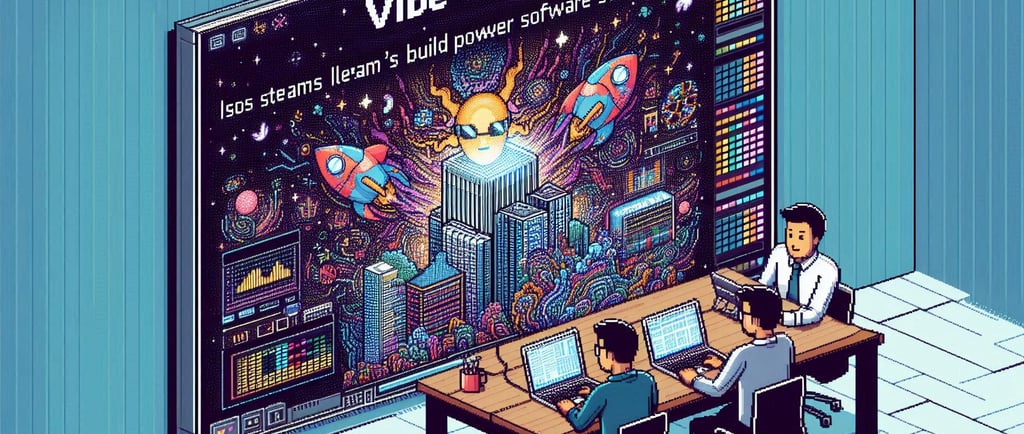The Rise of "Vibe Coding": How AI Is Rewriting the Startup Playbook
"Vibe coding," a term popularized by OpenAI’s Andrej Karpathy and championed by Y Combinator CEO Garry Tan, describes a new wave of software development powered by large language models. This AI-driven approach enables small teams — sometimes under 10 people — to build and scale software startups with unprecedented speed and efficiency. While debugging remains a human challenge, vibe coding is reshaping who can launch a successful tech company and which markets are now viable.
USAGEFUTURETOOLS
The AI Maker
7/28/20252 min read


The startup world is no stranger to buzzwords — but “vibe coding” might be the first one to truly encapsulate the seismic shift underway in how software is built. Coined by Andrej Karpathy, cofounder of OpenAI, the term has found a powerful advocate in Garry Tan, president and CEO of Y Combinator, Silicon Valley’s legendary startup incubator. Tan believes we’re entering an era where small, AI-powered teams can outproduce traditional engineering departments — and vibe coding is at the heart of it.
So what exactly is vibe coding? In short, it’s the practice of using large language models (LLMs) to write and iterate on code via natural language instructions. Instead of hiring engineers to build out features line by line, startup founders can now “talk” to AI tools like Cursor or Windsurf and have them generate production-level applications. Need to tweak an interface or fix a bug? Just describe the fix, and the model makes the change — instantly.
The impact is staggering. According to Tan, companies in Y Combinator’s latest cohort are generating between $1 million and $10 million in annual revenue with fewer than 10 people on the team — a scale and efficiency that would’ve been unheard of in early-stage startups just a few years ago. He adds that 25% of the current batch has codebases that are 95% AI-generated. The AI revolution in software development isn’t theoretical — it’s happening in real-time.
But this isn’t just about smaller teams or faster development cycles. Vibe coding is changing who gets to start a company. Tan points out that engineers who once couldn’t land jobs at tech giants like Meta or Google can now spin up a product, find product-market fit, and scale — all without venture capital or an army of developers. It's a democratization of entrepreneurship fueled by generative AI.
However, this new frontier isn’t without its friction. While AI excels at generating functional code, it still stumbles when it comes to debugging. As Tan noted in a recent episode of Lightcone, Y Combinator’s official podcast, the LLMs struggle to meaningfully diagnose what went wrong in their own outputs. For now, humans still need to investigate and solve the bugs, creating a critical dependency on engineers who can interpret and refine AI output.
Even so, Tan sees vibe coding as a net positive — especially for tackling niche markets that were previously considered too small to justify the cost of custom software. With AI dramatically reducing build costs, even highly specific tools can now become profitable ventures. What used to take dozens or hundreds of engineers, vibe coders can now accomplish in days.
As the line between coder and prompt engineer continues to blur, vibe coding may prove to be more than a passing trend — it could be the foundation of the next great wave of startups. And if Tan’s predictions hold true, the next billion-dollar business might just be built by a handful of “vibe coders” and a very powerful AI.
Cited: https://www.businessinsider.com/vibe-coding-startups-impact-leaner-garry-tan-y-combinator-2025-3
Your Data, Your Insights
Unlock the power of your data effortlessly. Update it continuously. Automatically.
Answers
Sign up NOW
info at aimaker.com
© 2024. All rights reserved. Terms and Conditions | Privacy Policy
